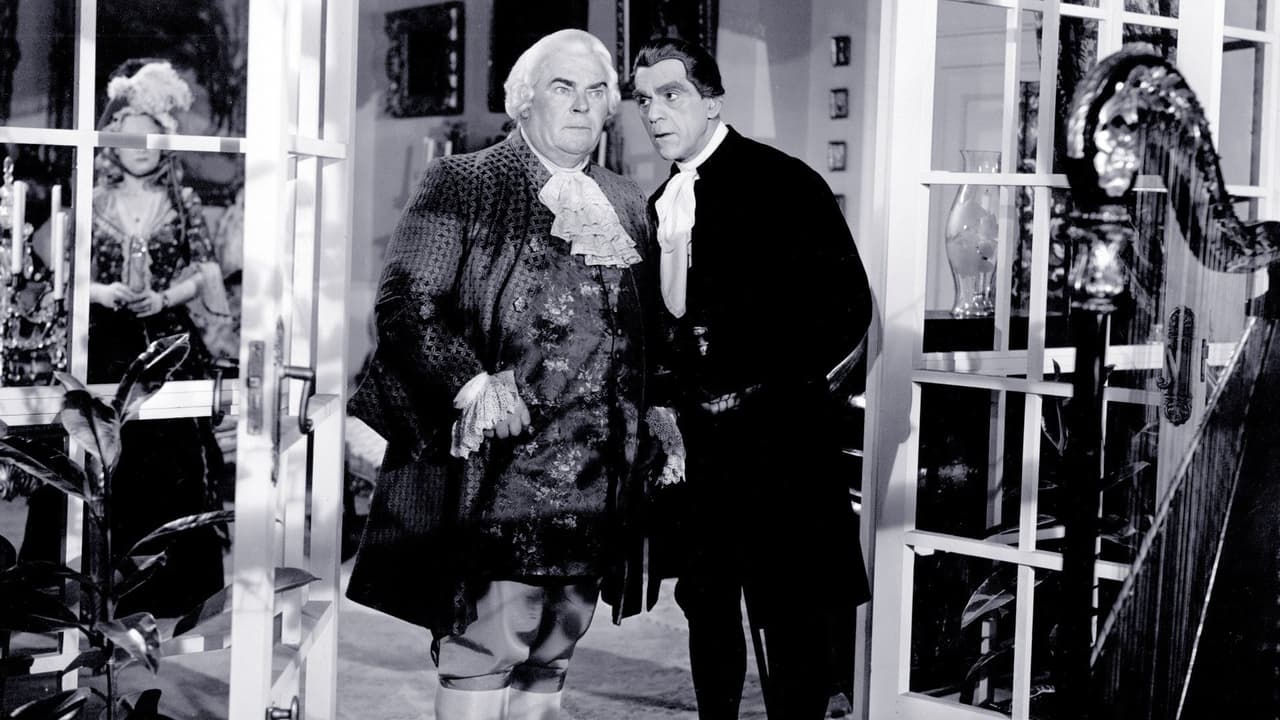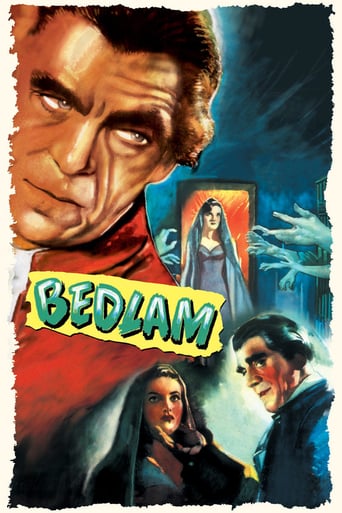

Actually, "Bedlam" is billed as a Drama first, then a Horror and then a Thriller movie. there is very little horror and it's not very thrilling, but you get to see Boris Karloff as a villain, but he's not very scary. This is a Val Lewton production, which means it gets the most value out of a very small budget, and from that standpoint the movie is fairly interesting.Anna Lee is lovely as the crusading Nell Bowen, who tries to expose Karloff's Mental institution as unhealthy and unsanitary and houses political prisoners as well as certifiables. The Institution suffers from a lack of ambiance, and not such a bad place as the original Bedlam. I think that's due to the restrictive budget, since Lewton worked miracles with other under-budget pictures. I suppose if you are a fan of Boris Karloff you might enjoy this film more than I did, but I can't recommend it otherwise.p.s. The website will not take my corrected spelling of ambiance (an e in place of the second a), just so you know.
... View MoreSo I gave this a watch this morning and see if Id be easily creeped out by it, however it just seemed very dull and confusing. I mean, if it was gonna be set at a mental hospital, they should've set it up as a mental hospital, not a 17th century like. OK at the beginning, we see a mental institution patient leaping to his death but that's about it really. It honestly didn't concentrate on the whole story, it more less concentrated on the lead characters who dressed up in ridiculous Mozart type costumes.Yeah, you wont be easily entertained or creeped out folks because its not something to go over the top about..........
... View MoreBedlam is the ninth and last of the influential films producer Val Lewton made at RKO in the 1940s. Unlike most of those other films, Bedlam is less of a horror film than a historic drama. Oh there are horrors, to be sure. But they are horrors of the natural variety; the evil that men do to each other. No supernatural themes here, nor any of the trademark Lewton plot ambiguities. Perhaps this is why it is the Lewton film I rewatch the least, despite my affinity for Boris Karloff. Make no mistake, it's a strong film and an overlooked one, with an excellent performance by Karloff. But it doesn't have quite as much appeal to me as more multilayered Lewton films.The story is about a young woman named Nell (Anna Lee) who is a "protégé" to wealthy Lord Mortimer (Billly House). Nell becomes disgusted by the way the inmates at Bedlam asylum are being treated and tries to bring about reforms to the system. This puts her at odds with Bedlam's cruel master George Sims (Boris Karloff). To silence her, Sims conspires with Lord Mortimer to have Nell committed to Bedlam.Mark Robson's direction is great and the cast is wonderful. In addition Karloff, Anna Lee gives what is probably her finest performance as a leading lady. Billy House is pitch-perfect as Lord Mortimer. Solid script from Val Lewton. Lewton wrote the screenplay (under a pen name) but gave a writing credit to William Hogarth, an 18th century artist. Lewton was inspired to do the film by one of Hogarth's prints. Normally this would not be enough to give someone even a "suggested by" writing credit. But perhaps Lewton's experience with The Ghost Ship had made him more sensitive about being accused of stealing ideas. Several of Hogarth's prints are shown in the film.Bedlam is a good film with some atmosphere and tension. Fans of Karloff or Lewton should check it out, of course. It's not my favorite film from either but it's good.
... View MoreIn 1761 London, sadistic headmaster Boris Karloff (as George Sims) runs the "St. Mary's of Bethlehem Asylum" for lunatics with an iron fist. The place is more commonly and appropriately called "Bedlam". After two patients die under Mr. Karloff's cruel care, actress-turned-mistress Anna Lee (as Nell Bowen) decides to expose the mental institution's abusive living conditions. She also hits Karloff with both her riding stick and the palm of her hand. Double ouch. Karloff provides Ms. Lee's fat old lover Billy House (as "Lord" Mortimer) with his gin-loving niece Elizabeth Russell (as Kitty Sims) and has Lee brought before the "Commission of Lunacy". After claiming to be 23-years-old, Lee is committed. Lee must keep her wits as Quaker stonemason friend Richard Fraser (as William Hannay) helps from the outside...****** Bedlam (4/19/46) Mark Robson ~ Boris Karloff, Anna Lee, Richard Fraser, Billy House
... View More